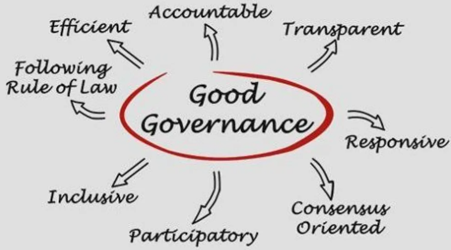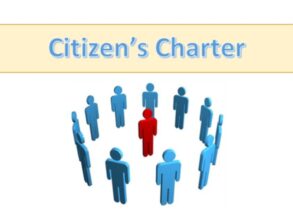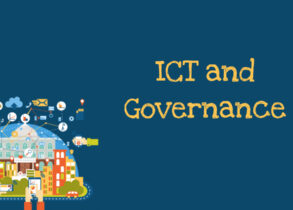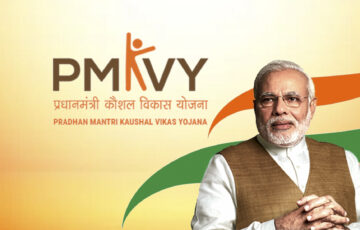Citizen Charter – Part 2
Relevance
- GS Paper 2 Citizens Charters, Transparency & Accountability and institutional and other measures.
- Tags: #CitizensCharter #Governance #Democracy #UPSC #UPSCMains.
What is the Citizen’s Charter
- A Citizen’s Charter is a document that outlines the commitments made by a government organization to its citizens or client groups concerning services or schemes.
- The Primary objective is to bridge the gap between citizens and administration while aligning administrative processes with citizen needs.
Origin and Principles
- The concept of Citizen’s Charter was first introduced in the United Kingdom in 1991 under the Conservative Government of John Major.
- Its Primary objective was to continually improve public services quality to align them with the needs and preferences of the people.
- The Labour Government of Tony Blair revived this concept in 1998, renaming it “Services First.”
This initiative was guided by six principles
- Quality: Enhancing the quality of services.
- Choice: Wherever feasible, providing choices.
- Standards: Defining what to expect and how to respond if standards are not met.
- Value: Ensuring value for taxpayers’ money.
- Accountability: Holding individuals and organizations accountable.
- Transparency: Ensuring transparency in rules, procedures, schemes, and grievance mechanisms.
Citizen’s Charters Evolution in India
- Since 1996, India has witnessed significant economic development and rising literacy rates (from 51.63% to 65.38%).
- This transformation has led citizens to become more aware of their rights and increasingly vocal about their expectations from government services.
- A consensus on effective and responsive administration emerged.
- At a 1997 Chief Ministers’ Conference presided over by the Prime Minister, an “Action Plan for Effective and Responsive Government” was adopted.
- A pivotal decision was to formulate Citizen’s Charters for sectors with extensive public interaction, outlining service standards, timeframes, grievance mechanisms, and citizen and consumer group involvement.
DARPG’s Coordination
- The Department of Administrative Reforms and Public Grievances (DARPG) in the Government of India took the lead in coordinating, formulating, and operationalizing Citizen’s Charters.
- The Government of India launched the “www.goicharters.nic.in” website on May 31, 2002, to provide comprehensive information on Citizen’s Charters and public service standards.
Seven Step Model for Citizen Centricity
The 2nd Administrative Reforms Commission (ARC) 12th Report highlights a seven-step model aimed at making organizations citizen-centric, focusing on effective public service delivery.
Define Services and Identify Clients
- Organizations should clearly outline the services they provide, encompassing a broad range of offerings, including regulatory enforcement.
- Clients, or service recipients, must be identified and categorized into groups to better understand their diverse needs and expectations.
Set Standards
- Standards and norms for each service should be established based on client expectations, organizational capabilities, and overall goals.
- Realistic and achievable standards are essential and should include mechanisms for addressing complaints.
Develop Capacity
- Developing the capacity to meet set standards is vital, involving conventional training, value inculcation, creating a customer-centric culture, and boosting staff motivation and morale.
- Capacity building should be an ongoing process, accommodating the periodic upgrading of standards.
Perform
- To achieve the set standards, organizations should establish internal mechanisms to guide individuals and units in working toward organizational goals.
- A performance management system can help ensure each unit performs to the best of its ability.
Monitor
- Organizations need to create a monitoring mechanism to ensure that established standards are adhered to, with automatic systems in place to signal any deviations.
- A robust system of rewards and penalties can help drive compliance with standards.
Evaluate
- Evaluation of customer satisfaction, conducted by an external agency, is necessary to assess the degree of citizen-centricity within the unit.
- Evaluations can include surveys, citizens’ report cards, feedback collection, or professional assessments, revealing areas of improvement and success.
Continuous Improvement
- Continuous improvement is a perpetual process, adapting to rising citizen aspirations and changing needs.
- New services must be introduced, standards should be revised based on monitoring and evaluation, and internal capabilities and systems must be continuously upgraded.
Shift toward citizen-centricity
- The ARC suggests that this model can help organizations make the shift toward citizen-centricity, ensuring citizens remain at the heart of service delivery.
- The model emphasizes that Citizen’s Charters should not merely be a commitment but a practical tool to improve public service quality.
- The Commission recommends that both Union and State Governments make this seven-step model mandatory for all public service organizations to enhance the quality and effectiveness of service delivery.
Impact of Citizen’s Charter in India
Enhanced Accountability
- Clear Commitments: Government departments are now held accountable as the charters define their service commitments.
- Responsibility: Officials are accountable for meeting the service standards set in the charters.
Improved Service Quality
- Efficiency: Public services have become more efficient, accessible, and responsive.
- Higher Quality: Focusing on charter commitments has resulted in the delivery of better quality services.
Empowered Citizens
- Awareness: Citizens are now more aware of their rights and entitlements when dealing with government departments.
- Empowerment: The charters empower citizens to demand improved services and hold the government accountable.
Transparency and Trust
- Reduced Bureaucracy: Charters introduce transparency, reducing bureaucratic hurdles in service delivery.
- Enhanced Trust: Citizens trust government services more, knowing they can refer to charters for service standards.
Efficient Governance
- Streamlined Processes: Government agencies have optimized their processes to meet charter commitments, resulting in increased efficiency.
- Customer-Centric Approach: The initiative promotes a customer-centric approach to governance.
Lessons from Citizen’s Charter Implementation
- Overcoming Skepticism: Implementing the Citizen’s Charter initiative may face skepticism from both bureaucrats and citizens. Effective awareness campaigns are vital at the outset to address this skepticism.
- Innovative Awareness: Awareness campaigns should be designed and delivered innovatively to engage all stakeholders effectively.
- Changing Mindsets: The issuance of a Citizen’s Charter doesn’t change staff and client mindsets overnight. It requires persistent efforts to bring about attitudinal changes.
- Involving Staff: New initiatives often face resistance from staff, especially those at the forefront. Involving and consulting them at all levels of Charter formulation and implementation can help overcome this resistance.
- Gradual Process Improvement: Instead of attempting to reform all processes simultaneously and encountering resistance, it’s advisable to break tasks into smaller components and address them one by one.
- Effective Monitoring: Citizen’s Charter initiatives should include a mechanism for monitoring, evaluating, and reviewing the charters’ performance. Ideally, an external agency should handle this task.
Latest best practices in Citizen’s Charter in India
- Ministry of Railways: The 2021 Citizen’s Charter introduced commitments to passengers, ensuring clean and punctual trains, and efficient ticket refunds, resulting in improved rail services.
- Ministry of Commerce and Industry (2023): The 2023 Charter streamlined business processes, reduced permit and license durations, and provided businesses access to government schemes, encouraging economic growth.
The Citizens’ Charter is a powerful instrument in the journey towards citizen-centric governance. It embodies the evolving relationship between the state and its citizens, recognizing that citizens are not just recipients of services but active participants in shaping public administration. As governments worldwide strive for improved governance, the Citizens’ Charter remains a vital pillar in building a stronger, more inclusive society.
| Mains Question
Discuss the significance of the seven-step model for Citizen Centricity as recommended by the Second Administrative Reforms Commission. How can this model be applied to transform public service organizations into more citizen-centric entities, and what are the potential benefits? |









